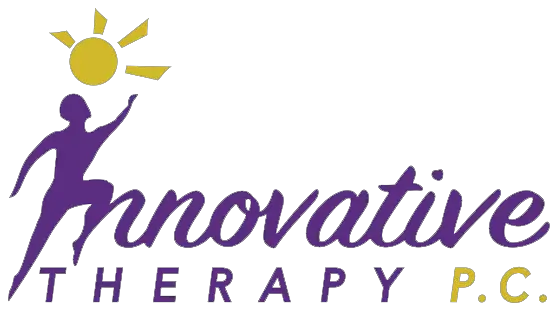I remember the first time I faced a torn ligament; the constant discomfort, the limited movement, and the fear of not getting back to full strength haunted me daily. Like many athletes, I wanted a fast and safe way to return to my routine, and that’s when I started learning about the top physiotherapy techniques for sports rehab that professionals rely on.
I discovered powerful treatment methods like manual therapy, electrotherapy, and guided exercises that don’t just relieve pain but actually speed up the healing process. The right approach, used at the right time, can make all the difference in how quickly your body bounces back.
In this article, I’ll walk you through these expert-backed techniques. Whether you’re recovering from a strain, sprain, or something more serious, this guide is here to help. Keep reading!
Why Fast and Safe Rehab Matters in Sports Recovery

In the world of sports, every day counts. The longer you’re out, the more your muscles weaken, your skills fade, and your motivation drops. If rehab is too slow, you risk permanent damage. If it’s rushed, you could reinjure yourself even worse. Striking a perfect balance is key and that’s where smart physiotherapy comes in.
Whether you’re an athlete or a weekend jogger, getting back to your routine safely and quickly is essential. Proper rehabilitation not only restores function but also prevents future injuries, boosts confidence, and brings mental relief. Without professional support, recovery can feel like a guessing game.
That’s why understanding the best physiotherapy methods is more than just knowledge, it’s your roadmap to full recovery. Let’s look at the most common sports injuries first, so you know exactly what you’re up against.
Common Sports Injuries That Need Physiotherapy
Most sports injuries fall into predictable patterns. Here are some of the most common ones that require focused physiotherapy:
Soft Tissue Injuries
- Muscle strains
- Ligament sprains
- Tendonitis (inflammation of the tendon)
- Bruises or contusions
Joint Injuries
- Dislocations (shoulder, knee, etc.)
- Labral tears (hip or shoulder)
- Meniscus tears (knee)
Overuse Injuries
- Tennis elbow
- Runner’s knee
- Shin splints
- Stress fractures
Post-surgical Conditions
- ACL reconstruction
- Rotator cuff repairs
- Joint replacements
These injuries often need tailored rehab plans based on severity, body region, and level of activity. Next, let’s understand how physiotherapy accelerates the healing process.
Also Read: Inner Thigh Pain Guide – Causes, Prevention, and Treatment
How Physiotherapy Helps You Recover Faster

Physiotherapy isn’t just about applying ice packs or stretching. It’s a science-backed approach to restoring movement, strength, and confidence. When applied correctly, it shortens the recovery period significantly and reduces pain.
Here’s what good physiotherapy does:
- Boosts blood flow to injured tissues for faster healing
- Strengthens supporting muscles to protect weak areas
- Improves joint mobility and flexibility
- Corrects posture and alignment
- Re-educates your muscles and nerves
- Lowers the risk of future injuries
With regular sessions, you regain control over your body. You move better, feel stronger, and experience less fear about reinjury.
Let’s now look at the techniques that make this recovery possible.
Also Read: Runner’s Knee Recovery Time – How Physiotherapy Can Help You Get Back on Track
7 Top-Rated Physiotherapy Techniques Used by Experts
Here are the most effective physiotherapy methods that sports professionals and clinics use worldwide:
1. Manual Therapy (Hands-On Techniques)
Manual therapy includes techniques like joint mobilization, deep tissue massage, and trigger point release. Therapists use their hands to loosen stiff muscles, reduce pain, and improve movement. It’s especially useful for joint stiffness, lower back pain, and neck issues.
2. Therapeutic Exercises
These are planned and progressive movements to regain strength, flexibility, and balance. Your therapist may assign resistance band routines, balance board tasks, or core workouts. These exercises are tailored to your stage of recovery and help build resilience.
3. Dry Needling and Acupuncture
Dry needling targets muscle knots or “trigger points.” It releases tension and increases blood flow, speeding up recovery. Acupuncture, rooted in Chinese medicine, balances your body’s energy to relieve chronic pain.
4. Electrotherapy
This includes tools like TENS (Transcutaneous Electrical Nerve Stimulation) and ultrasound therapy. TENS blocks pain signals and reduces inflammation, while ultrasound promotes tissue healing through sound waves.
5. Kinesiology Taping
These stretchy tapes support muscles and joints without restricting movement. They reduce swelling, improve blood flow, and help athletes return to play sooner.
6. Hydrotherapy
Water-based exercises reduce joint stress while building strength. The buoyancy of water allows pain-free movement, especially great for post-surgery rehab or arthritis-related injuries.
7. Cryotherapy and Heat Therapy
Ice packs reduce swelling and pain immediately after an injury, while heat relaxes tight muscles and improves circulation during the recovery phase.
Top Physiotherapy Techniques
| Technique | Best For | How It Helps | Pain Level |
|---|---|---|---|
| Manual Therapy | Muscle stiffness, joint pain | Improves range of motion, reduces tension | Moderate |
| Therapeutic Exercises | Strength and mobility restoration | Builds muscle, corrects movement patterns | Varies |
| Electrotherapy | Swelling, nerve pain | Reduces inflammation and pain | Low |
| Dry Needling | Deep muscle pain, trigger points | Releases knots, boosts healing | Moderate |
| Kinesiology Taping | Swelling, mild sprains | Supports joints, aids circulation | Low |
| Hydrotherapy | Joint conditions, post-surgery rehab | Gentle resistance and mobility | Low |
| Cryo/Heat Therapy | Acute and chronic injuries | Controls swelling, relaxes muscles | Low |
What to Expect in a Sports Rehab Session
Walking into a physiotherapy clinic for the first time can feel uncertain. Here’s what usually happens:
- Assessment:
Your therapist checks your injury, range of motion, strength, and pain level. - Goal Setting:
You and your therapist decide on short- and long-term rehab goals. - Custom Plan:
You receive a tailored combination of exercises, hands-on treatments, and modalities. - Progress Monitoring:
Regular reassessments ensure you’re healing on track and exercises are adjusted as needed. - Return to Activity Guidance:
Once strong enough, you’ll practice sport-specific drills or get recommendations on easing back into training.
Physiotherapy Tools That Make a Big Difference
Many rehab programs include modern tools that assist in faster recovery:
Commonly Used Tools:
- Resistance bands
- Stability balls
- Foam rollers
- Balance boards
- Electrical stimulation devices
- Ultrasound machines
Table: Rehab Tools & Their Benefits
| Tool | Use Case | Benefit |
|---|---|---|
| Resistance Bands | Muscle strengthening | Safe strength training at any level |
| Balance Boards | Ankle/knee rehab | Builds stability and joint control |
| Foam Rollers | Muscle release | Improves blood flow and mobility |
| EMS Machines | Muscle reactivation post-surgery | Stimulates contractions, prevents atrophy |
| Ultrasound Therapy | Tissue healing | Deep heat, reduces inflammation |
How to Choose the Right Rehab Technique for Your Injury
Not every injury responds to every method. A skilled physiotherapist will guide you, but here’s a basic breakdown:

Mild Sprains or Muscle Tightness:
- Kinesiology taping
- Manual therapy
- Stretching routines
Moderate Injuries:
- Dry needling
- TENS therapy
- Resistance exercises
Post-Surgical Rehab:
- Hydrotherapy
- Ultrasound therapy
- Structured movement re-education
Expert Tips for a Faster, Safer Recovery
Want to speed up your recovery? Keep these tips in mind:
Do:
- Follow your therapist’s instructions
- Stay consistent with your exercises
- Eat a protein-rich, anti-inflammatory diet
- Get enough rest and sleep
Don’t:
- Skip warmups
- Train through pain
- Rely only on rest, active recovery is key
- Neglect your mental health during rehab
Also read: Hip Replacement Physical Therapy & Rehab Strategies
When Should You See a Physiotherapist After an Injury?
If you feel ongoing pain, reduced movement, or discomfort that lasts more than a few days, it’s time to book a session. Physiotherapy is most effective when started early after injury. It not only helps you heal faster but also uncovers hidden issues that could lead to chronic problems if left untreated.
Don’t wait until the pain becomes unbearable. A simple sprain can turn into a long-term issue without proper guidance.
Final Thoughts: Recover Smarter, Not Harder
Healing from a sports injury isn’t just about time, it’s about doing the right things consistently. The top physiotherapy techniques for sports rehab are tried, tested, and trusted by athletes and professionals around the world. From dry needling to hydrotherapy, each method has a role in helping you come back stronger and more confident.
Remember, your body needs your help to recover. Work with a certified physiotherapist, follow your plan, and stay motivated. You’ll be back on your feet before you know it!
FAQs About Physiotherapy Techniques for Sports Rehab
How soon after an injury should I start physiotherapy?
You should begin physiotherapy as early as possible, ideally within a few days. Early intervention prevents complications and speeds up healing.
Are physiotherapy techniques painful?
Some techniques may cause mild discomfort, especially manual therapy or dry needling. However, the goal is always to reduce pain over time.
Can I do physiotherapy exercises at home?
Yes, many exercises are designed for home use. Your therapist will provide a tailored plan to follow between sessions.
Is physiotherapy effective for chronic sports injuries?
Absolutely. Physiotherapy can manage long-term pain, improve mobility, and prevent flare-ups from chronic injuries.
How long does rehab usually take?
Recovery time varies by injury. Minor sprains may heal in 2–4 weeks, while post-surgery rehab can take several months.





